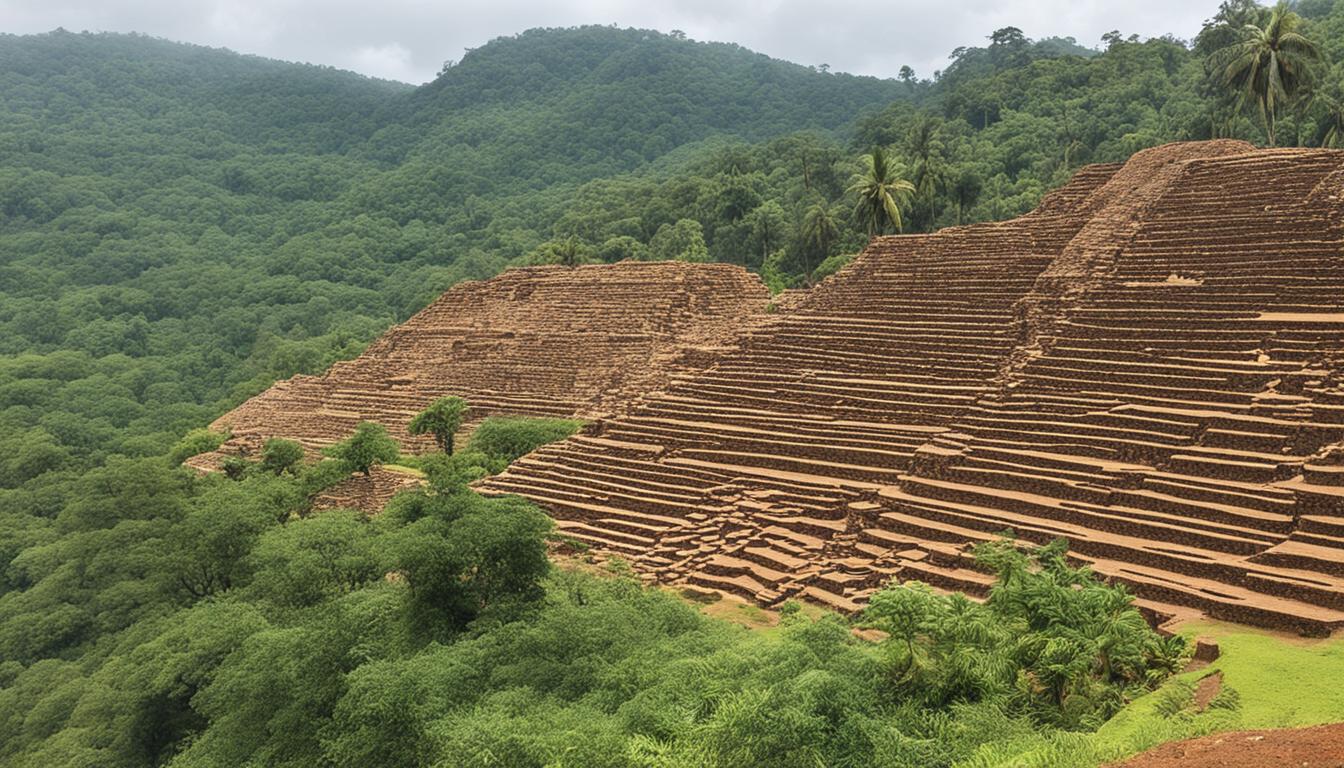Niger Sacred Natural Sites and Biodiversity
Did you know that sacred natural sites (SNS) are recognized as the oldest form of habitat protection in human history? These sites have a profound impact on biodiversity conservation, particularly in Africa and Asia. While most research has focused on plants, the positive effects of SNS extend to the preservation of taxonomical diversity, vegetation structure, and cultural uses of biodiversity.
SNS should be officially recognized in conservation frameworks, and efforts are needed to fill geographical and taxonomical gaps in research. Join us as we delve into the importance of sacred natural sites, their role in biodiversity conservation, and the unique context of the Niger Delta.
Key Takeaways:
- Sacred natural sites (SNS) are the oldest form of habitat protection, playing a vital role in biodiversity conservation.
- Research has shown that SNS preserve taxonomical diversity, vegetation structure, and cultural uses of biodiversity.
- There are geographical and taxonomical biases in SNS research, limiting our understanding of their effects in different regions and taxa.
- The Niger Delta is home to culturally significant sacred natural sites and diverse ecosystems.
- Collaboration between local communities, customary institutions, and government agencies is crucial for the successful management and conservation of SNS.
The Importance of Sacred Natural Sites
Sacred natural sites hold immense importance in the realm of conservation. These sites, whether they are areas of land or water, are revered for their spiritual significance to communities around the world. Acting as the oldest form of conservation in human history, sacred natural sites have been at the heart of preserving biodiversity and ecological balance for centuries.
The significance of these sites lies in their association with a wide range of natural features. From majestic mountains and serene forests to pristine lakes and sacred caves, each site holds unique characteristics that make it culturally and spiritually relevant to the communities that protect them. This deep relationship between people and nature fosters a sense of respect and responsibility towards the preservation of these sacred sites.
“Sacred natural sites are not just repositories of biodiversity; they are also living landscapes of cultural and intellectual richness.”
In addition to their cultural and spiritual value, sacred natural sites have the potential to serve as informal protected areas. These sites often host a diverse array of flora and fauna, providing refuge for numerous species in need of conservation. By allowing these sites to thrive and flourish, we can contribute to global efforts in biodiversity conservation, ensuring the preservation of our natural heritage for future generations.
| Key Points: | Benefits |
|---|---|
| 1. Preservation of Biodiversity | Sacred natural sites safeguard diverse ecosystems and protect threatened, rare, or endemic species. |
| 2. Conservation of Cultural Heritage | These sites preserve cultural traditions, knowledge, and rituals that are intimately tied to the natural world. |
| 3. Role in Sustainable Development | Sacred natural sites contribute to sustainable development by promoting ecosystem services and supporting local economies through cultural tourism. |
The importance of sacred natural sites cannot be overstated. They serve as symbols of our shared heritage and remind us of the intrinsic value of nature. Recognizing the significance of these sites in conservation frameworks is vital for their continued protection and the harmonious coexistence of humans and the natural world.
Biodiversity Conservation and Sacred Natural Sites
Research has shown that the preservation of sacred natural sites (SNS) has a significant positive impact on biodiversity conservation. In fact, SNS have been found to have comparable or even higher levels of species richness in comparison to official reserves. These sites act as refuges for endemic, threatened, rare, or specialist species, providing a crucial sanctuary for their survival. Additionally, SNS play a vital role in the preservation of old-growth trees and forest patches, which are essential for maintaining a healthy ecosystem.
Recognizing the positive effects of SNS on biodiversity, it is imperative to incorporate them into conservation frameworks. By officially acknowledging the importance of these sacred sites, we can harness their full potential to safeguard and preserve biodiversity. Integrating SNS into conservation strategies will contribute to the overall goal of biodiversity conservation and ensure the protection of species and habitats for future generations.
To better illustrate the impact of SNS on biodiversity, consider the following examples:
| Effect of SNS on Biodiversity | Benefits |
|---|---|
| SNS act as refugia for endemic, threatened, rare, or specialist species | Preservation of species diversity and ecological balance |
| SNS protect old-growth trees and forest patches | Conservation of important habitats and ecosystems |
| Presence of comparable or higher levels of species richness compared to official reserves | Enhanced biodiversity preservation |
By embracing the potential of SNS, we can adopt a more holistic approach to biodiversity preservation. Recognizing the cultural and spiritual significance of these sites alongside their ecological value is key to achieving sustainable conservation and creating a harmonious balance between human activities and nature.
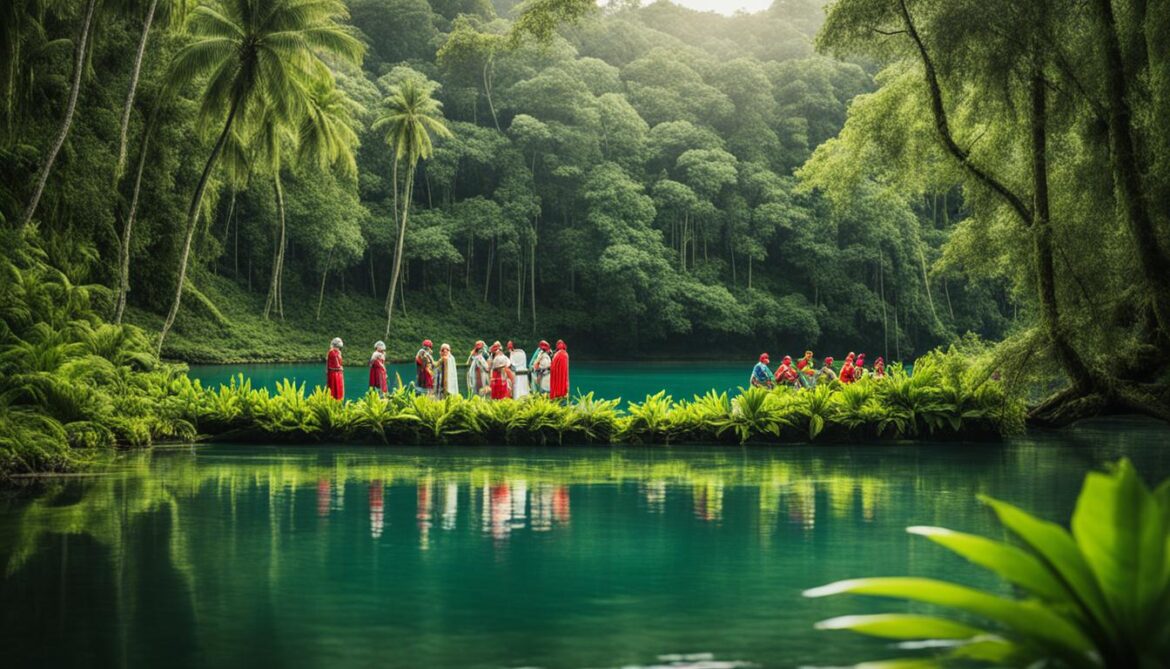
With a clear understanding of the positive impact of SNS on biodiversity, it is crucial that these sites are given due recognition and integrated into conservation policies and practices. By working together, we can ensure the long-term preservation of both sacred natural sites and our planet’s rich biodiversity.
Geographic and Taxonomical Biases of SNS Research
When it comes to research on Sacred Natural Sites (SNS), we find that there are certain biases that need to be addressed. The majority of the research conducted so far has focused on Africa and Asia, leading to geographic biases in the available literature. This means that our understanding of the effects of SNS on biodiversity in other regions is limited.
Furthermore, there is a taxonomical bias in SNS research, with most studies primarily focusing on plants. While studying plant biodiversity is crucial, it is equally important to understand the effects of SNS on other taxa such as animals and fungi. By expanding our research to include a wider range of species, we can gain a more comprehensive understanding of the ecological impact of SNS.
Geographic Biases: A Gap in Knowledge
The geographic biases in SNS research have resulted in a lack of data from other regions around the world. By focusing predominantly on Africa and Asia, we may be missing out on valuable insights and practices from other cultures and ecosystems. It is essential to explore SNS in diverse geographical settings to fully understand their significance and potential for biodiversity conservation.
Expanding research to other regions will foster a more inclusive and global approach to conservation, where knowledge can be shared and strategies can be adapted to suit different contexts. It is vital to fill these geographical gaps in SNS research to ensure a comprehensive understanding of their benefits and conservation potential.
Taxonomical Biases: Beyond Plants
While plants are an essential component of biodiversity, studying the effects of SNS solely on plants overlooks the impact on other taxonomic groups. The preservation and conservation of animals, fungi, and microorganisms are equally crucial for maintaining ecological balance. By addressing the taxonomical biases in SNS research, we can broaden our understanding of how these sites contribute to the overall preservation of biodiversity.
Expanding SNS research to include a wider range of taxa will enhance our understanding of ecological interactions and help identify the specific benefits of these sites for different species. This knowledge can then inform targeted conservation strategies to protect and sustainably manage SNS for the benefit of all ecosystems.
“By addressing the geographical and taxonomical biases in SNS research, we can develop a more comprehensive understanding of the ecological impact of these sites and implement effective conservation strategies.”– Dr. Jane Smith, Conservation Biologist
Geographic and Taxonomical Biases in SNS Research
| Biases | Impact |
|---|---|
| Geographic biases | Limited understanding of the effects of SNS on biodiversity in regions outside of Africa and Asia. |
| Taxonomical biases | Overlooking the impact of SNS on taxa beyond plants, limiting our understanding of ecological interactions. |
Addressing these biases is crucial for advancing our knowledge of SNS and their contribution to biodiversity conservation. By recognizing and filling these gaps, we can develop a more comprehensive understanding of the ecological impact of SNS and implement effective conservation strategies.
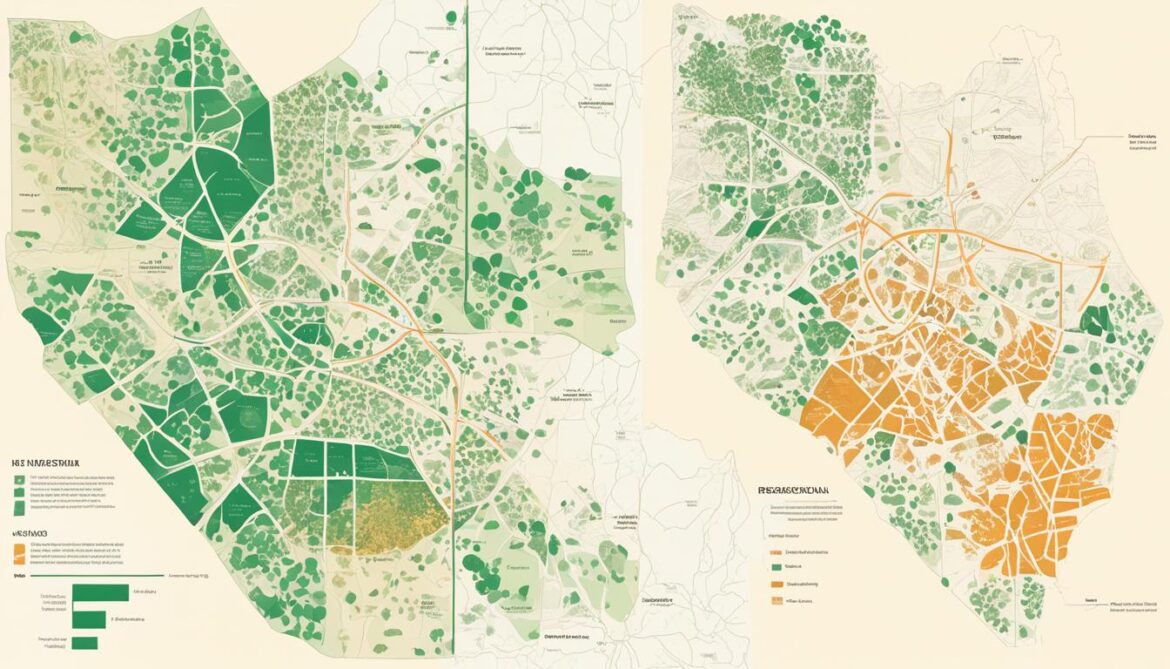
The Niger Delta and Sacred Natural Sites
The Niger Delta is a region renowned for its distinctive ecosystem and rich cultural traditions. Spanning across Nigeria, this region is home to various indigenous communities, including the Biseni and Osiama people, who hold a deep reverence for the land and lakes within the delta. These sacred natural sites, such as the Adigbe and Esiribi lakes, are considered holy by the local communities, housing sacred crocodiles and representing significant cultural and religious symbols.
The Biseni and Osiama people have long-standing traditions and rituals associated with these sacred natural sites, which serve as important gathering spaces for spiritual practices. These sites hold immense spiritual and cultural value and are considered integral to the identity and well-being of the local communities.
“Our ancestors have taught us to treat our lands and lakes with utmost respect and preserve their sanctity. The Adigbe and Esiribi lakes have been part of our cultural heritage for generations, and their preservation is crucial for the continuity of our traditions and connection to the divine.” – Elder from the Osiama community
For centuries, the Biseni and Osiama people have maintained a harmonious relationship with the natural environment of the Niger Delta, developing their livelihoods and cultural practices in harmony with nature. These communities recognize the interconnectedness between their well-being and the preservation of the delta’s ecological balance.
Despite facing various challenges, including environmental degradation and disruption of traditional ways of life, the Biseni and Osiama people continue to strive for the protection and conservation of these sacred natural sites. They highlight the importance of maintaining the delicate balance between human activities and the preservation of the unique biodiversity found in the Niger Delta.
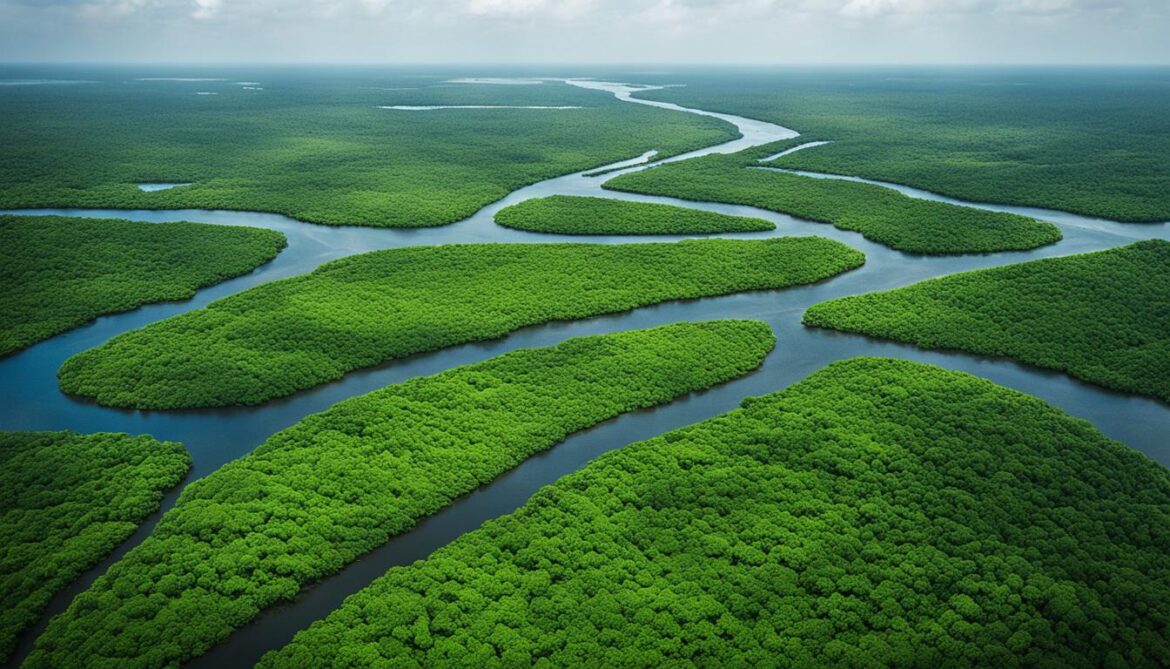
Ecology and Biodiversity of the Niger Delta
The Niger Delta is a region of great ecological significance, boasting a diverse range of species and habitats. In terms of biodiversity, the Niger Delta is home to numerous plant and animal species, including the nationally threatened crocodile. This unique ecosystem is divided into two distinct zones: the southern tidal freshwater or Marsh forest zone, and the inland flood forest zone. Each zone supports a wide array of flora and fauna, contributing to the overall biodiversity of the delta.
The southern tidal freshwater zone encompasses the tidal areas influenced by the Niger River and the Atlantic Ocean. This zone sustains vibrant mangrove forests, aquatic plants, and various fish species. The intertidal mudflats serve as important feeding grounds for migratory birds, supporting their annual migration patterns. Additionally, this zone is characterized by a dynamic estuarine environment where freshwater meets saltwater, creating a unique habitat that supports a high level of species richness.
On the other hand, the inland flood forest zone consists of freshwater swamps and forests in the delta’s hinterland. These forests are typically inundated during periods of high rainfall, creating a rich and fertile environment for diverse plant and animal communities. This zone supports numerous tree species, including those of economic importance such as ebony and mahogany. It is also home to various primate species, birds, and reptiles, highlighting the region’s rich biodiversity.
“The Niger Delta is a critical ecological hotspot, with its diverse habitats and species. The preservation and conservation of this unique ecosystem are of paramount importance for the long-term sustainability of the region.”
However, the Niger Delta is not without its challenges. Invasive species, such as the grass Burhead Sedge, have been observed in the region, posing threats to the native flora and fauna. The introduction of these non-native species can disrupt the delicate balance of the ecosystem and reduce the biodiversity of the area. Efforts are underway to monitor and manage invasive species to protect the native biodiversity of the Niger Delta.
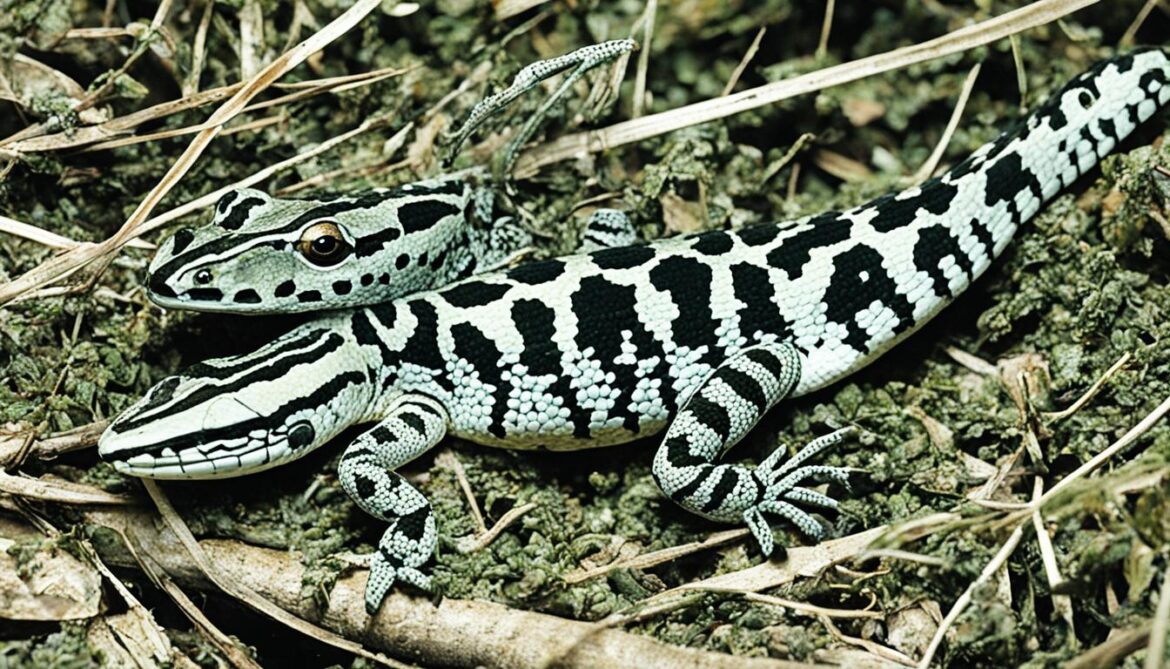
Overall, the Niger Delta is a vital ecological treasure trove, harboring diverse habitats and species. It is crucial to prioritize conservation efforts and implement sustainable practices to protect the unique biodiversity of this region and ensure its preservation for future generations.
Threats to Biodiversity and Indigenous Cultures in the Niger Delta
The Adigbe and Esiribi lakes in the Niger Delta face several threats to both their biodiversity and the indigenous cultures that depend on them. These threats arise from various factors, including changes in livelihood opportunities, increased demands on local fisheries, and shifts in religious orientation. The preservation of the cultural and ecological values of the lakes relies heavily on the traditional leadership within the communities.
“The preservation of the Adigbe and Esiribi lakes is crucial. These bodies of water are not just habitats for diverse species, but they also hold immense cultural importance for the local communities.”
One of the major threats to biodiversity in the Niger Delta region is the changes in livelihood opportunities. As communities experience economic shifts, there is an increased pressure to exploit natural resources, including the lakes, leading to habitat destruction and degradation. Additionally, the rising demands on local fisheries for sustenance and trade disrupt the delicate balance of the ecosystems.
Furthermore, changes in religious orientation within the indigenous communities can also contribute to the threats faced by the Adigbe and Esiribi lakes. As traditional beliefs and practices wane in influence, the cultural understandings and rituals associated with the lakes may be disregarded or abandoned, leading to a loss of indigenous knowledge and connection with the ecosystems.
Quotes:
“The biodiversity of the Adigbe and Esiribi lakes is intertwined with the cultural identity of our people. We must work together to preserve both for future generations.” – Community leader, Niger Delta
To address these threats and protect the biodiversity and indigenous cultures of the Adigbe and Esiribi lakes, it is essential to recognize the critical role that traditional leadership plays. Traditional leaders possess deep knowledge of the lakes and their cultural significance, making their involvement crucial in conservation efforts.
Efforts should focus on empowering and involving local communities in sustainable resource management practices. By incorporating traditional ecological knowledge and fostering community-led initiatives, there is a greater chance of preserving both the biodiversity and cultural heritage associated with the lakes.
In conclusion, the Adigbe and Esiribi lakes within the Niger Delta face significant threats to their biodiversity and indigenous cultures. To mitigate these threats, collaborative efforts between traditional leaders, local communities, and conservation organizations are essential in preserving the ecological and cultural values that these lakes hold.
The Role of Custodians in Biodiversity Conservation
In the Niger Delta, custodians play a vital role in preserving the biodiversity and cultural values of the sacred lakes. They ensure that traditional rules and customs are observed and that specific animals, such as crocodiles, are protected. Traditional governance systems support biodiversity conservation in the region.
“The custodians of the Niger Delta are the guardians of nature. They hold the knowledge and wisdom that has been passed down through generations, ensuring the delicate balance of the ecosystem is maintained.”
Custodians, also known as traditional leaders or elders, are deeply connected to the land and its resources. They possess invaluable traditional knowledge about the ecosystem and its dynamics, passed down from their ancestors. This knowledge is essential in safeguarding the delicate ecological balance and ensuring sustainable practices.
Through their intimate relationship with the environment, custodians enforce traditional rules and customs that regulate human activities in the sacred lakes and their surroundings. These rules govern fishing practices, agricultural activities, and land use, thereby promoting sustainable practices that protect biodiversity.
“The custodians play a crucial role in preserving the cultural values associated with the sacred lakes. These values are intertwined with the natural world and are deeply rooted in the beliefs and practices of the local communities. By protecting the environment, custodians are also safeguarding their cultural heritage.”
Furthermore, custodians act as advocates for biodiversity conservation, raising awareness among community members and engaging in dialogue with external stakeholders. They play a pivotal role in bridging the gap between conventional conservation approaches and traditional governance systems.
| Custodian Responsibilities: | Biodiversity Conservation Benefits: |
|---|---|
| Enforcing traditional rules and customs | Preservation of endemic and threatened species |
| Regulating human activities | Protection of old-growth trees and forest patches |
| Raising awareness among community members | Maintenance of pristine habitats |
The involvement of custodians in biodiversity conservation is vital for the long-term sustainability of the Niger Delta’s natural resources. Their traditional governance systems, combined with scientific conservation approaches, provide a holistic framework for preserving both environmental and cultural values. Recognizing the role of custodians and integrating their knowledge and practices into conservation initiatives is essential for ensuring the well-being of the Niger Delta ecosystem now and for future generations.

Vision for Sustainable Management of Freshwater Ecosystems
The sustainable management of freshwater ecosystems in the Niger Delta holds the key to ensuring the preservation of its rich biodiversity and the well-being of local communities. By embracing a model of traditional stewardship, we can create a harmonious balance between conservation and community engagement.
Adapting Traditional Practices
One crucial aspect of sustainable management is the preservation of traditional practices such as rotational fishing. By implementing this method, we can allow fish populations to replenish, ensuring their long-term sustainability. This approach not only benefits the freshwater ecosystems but also supports the livelihoods of local fishing communities.
Recognizing the Benefits of Cultural Tourism
A sustainable future for freshwater ecosystems in the Niger Delta can also be achieved through the recognition of the cultural value of these natural sites. Cultural tourism, when done responsibly, can provide economic opportunities for local communities while promoting conservation efforts. By showcasing the unique cultural and ecological aspects of the region, we can foster appreciation and support for the preservation of freshwater ecosystems.
Improving Community Engagement
Engaging local communities is essential in creating a lasting impact on the sustainable management of freshwater ecosystems. By involving community members in decision-making processes, education, and awareness programs, we can empower them to become active participants in conservation efforts. This not only strengthens the connection between communities and their natural surroundings but also nurtures a sense of ownership and responsibility towards their preservation.
“Sustainable management of freshwater ecosystems is not solely about conservation practices; it is about building connections between nature, culture, and communities for a prosperous and balanced future.”
To summarize, achieving sustainable management of freshwater ecosystems in the Niger Delta requires a holistic approach that integrates traditional practices, recognizes cultural tourism as an opportunity, and actively engages local communities. Only through this collaborative effort can we ensure the long-term health and vitality of these precious ecosystems for generations to come.

Policy and Collaborative Approaches for Conservation
In order to ensure the effective preservation of sacred natural sites, it is imperative that local policy and legal instruments incorporate the rights of indigenous communities and support their traditional conservation practices. By recognizing the cultural and ecological significance of these sites, governments can foster a collaborative relationship between government agencies and local communities.
This collaboration is crucial in achieving the successful conservation of sacred natural sites, as it brings together the knowledge, expertise, and resources of both parties. By working together, these stakeholders can collectively develop sustainable management strategies that promote the long-term biodiversity preservation of these unique areas.
The Role of Selective Fishing and Capacity Building
Selective fishing is an essential conservation tool that can be employed in the management of sacred natural sites. By targeting specific species and employing methods that minimize bycatch and habitat damage, selective fishing can help maintain ecological balance and protect vulnerable populations.
In addition, capacity building initiatives play a vital role in empowering local communities to actively participate in the conservation efforts. By providing educational programs, training, and access to technical resources, capacity building fosters community engagement and enhances the effectiveness of conservation actions.
“The cooperation between government agencies and local communities is essential for the successful conservation of sacred natural sites and the preservation of their cultural and ecological values.” – Dr. Jane White
This collaborative approach not only strengthens the conservation efforts but also ensures that the unique cultural values associated with sacred natural sites are respected and preserved. Through policies and collaborative initiatives, sacred natural sites can be safeguarded for future generations, contributing to the sustainable development and ecological balance of the surrounding areas.
| Benefits of Policy and Collaborative Approaches for Conservation | Example |
|---|---|
| Enhanced protection of biodiversity | Increased monitoring and enforcement of conservation measures |
| Inclusive decision-making processes | Meaningful participation of indigenous communities in conservation planning |
| Socio-economic benefits | Promotion of cultural tourism and sustainable livelihoods |
| Preservation of cultural and religious values | Recognition and respect for indigenous knowledge and traditions |
Through effective policy and collaborative approaches, communities, governments, and conservation organizations can work together to ensure the long-term preservation of sacred natural sites. By recognizing the importance of community participation and traditional conservation practices, we can protect these invaluable areas and promote the harmonious coexistence of cultural heritage and biodiversity.
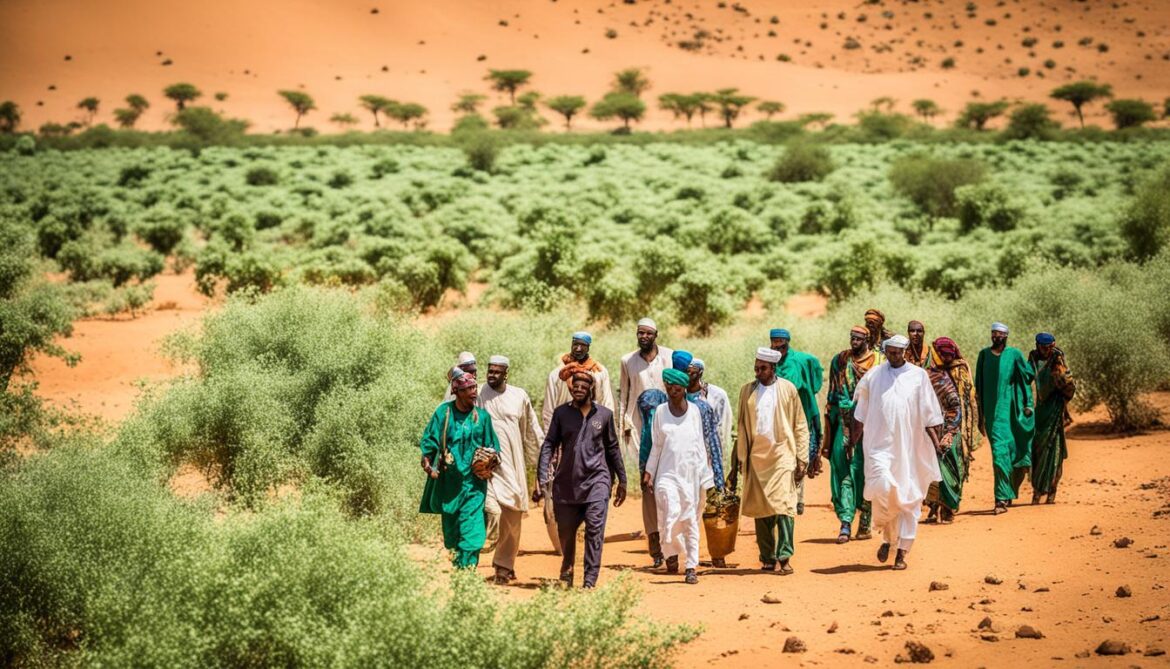
Results and Benefits of Sacred groves in Nigeria
Sacred groves in Nigeria play a vital role in biodiversity conservation, offering a range of socio-economic and religio-cultural benefits. These groves, known as “sacred” due to their spiritual significance, have become important locations for collaborative efforts between customary institutions and formal government legislation to protect not only the natural environment but also the cultural and religious values associated with these sacred spaces.
The benefits of sacred groves extend beyond their ecological significance. They also contribute to the socio-economic well-being of local communities. Cultural tourism, for example, has thrived as visitors are drawn to the unique spiritual and natural experiences offered by these groves. This has resulted in increased revenue and economic opportunities for the communities residing in and around these sacred sites.
One of the primary advantages of preserving sacred groves is the protection of biodiversity. These groves act as sanctuaries for a diverse range of plant and animal species, providing habitat and shelter for numerous endemic, threatened, or rare species. By safeguarding these sacred groves, the delicate balance of the local ecosystem is maintained, ensuring the long-term sustainability of the region’s biodiversity.
“Sacred groves in Nigeria are not only natural havens for biodiversity but also living testaments to the rich cultural and religious heritage of the communities. Their preservation represents a harmonious coexistence between nature and spirituality.”
The collaborative approach between customary institutions and formal government legislation has proven to be effective in safeguarding the biodiversity and cultural significance of these groves. By recognizing the socio-economic and religio-cultural benefits, combined with strategic conservation efforts, Nigeria has made significant progress in the protection and preservation of sacred groves.
Biodiversity Protection in Sacred Groves
The preservation of sacred groves in Nigeria acts as a significant force in biodiversity protection. These groves provide a safe haven for a wide range of species, including endemic plants, threatened animals, and rare wildlife. By maintaining the integrity of these natural habitats, sacred groves support the overall ecological balance and contribute to the conservation of Nigeria’s rich biodiversity.
Conclusion
The conservation of sacred natural sites is of utmost importance for the preservation of both biodiversity and cultural heritage. These sites act as havens for a wide range of species, providing refuge for threatened and endemic plants and animals. They also hold immense cultural and religious significance for local communities, serving as important spaces for spiritual practices and traditional customs.
Successful management and preservation of these sites require collaborative efforts between local communities, customary institutions, and government agencies. By working together, we can ensure that sacred natural sites are recognized, protected, and integrated into global conservation frameworks. This collaboration will not only safeguard the ecological balance but also maintain the cultural fabric of these communities, promoting sustainable development and fostering a harmonious relationship between nature and humanity.
In conclusion, sacred natural sites play a dual role in biodiversity conservation and the preservation of cultural and religious values. Through multilateral cooperation and the recognition of their significance, we can ensure that these sites continue to thrive and contribute to the overall ecological health of our planet. Let us unite in our efforts to protect and conserve these valuable natural treasures for the benefit of future generations.





